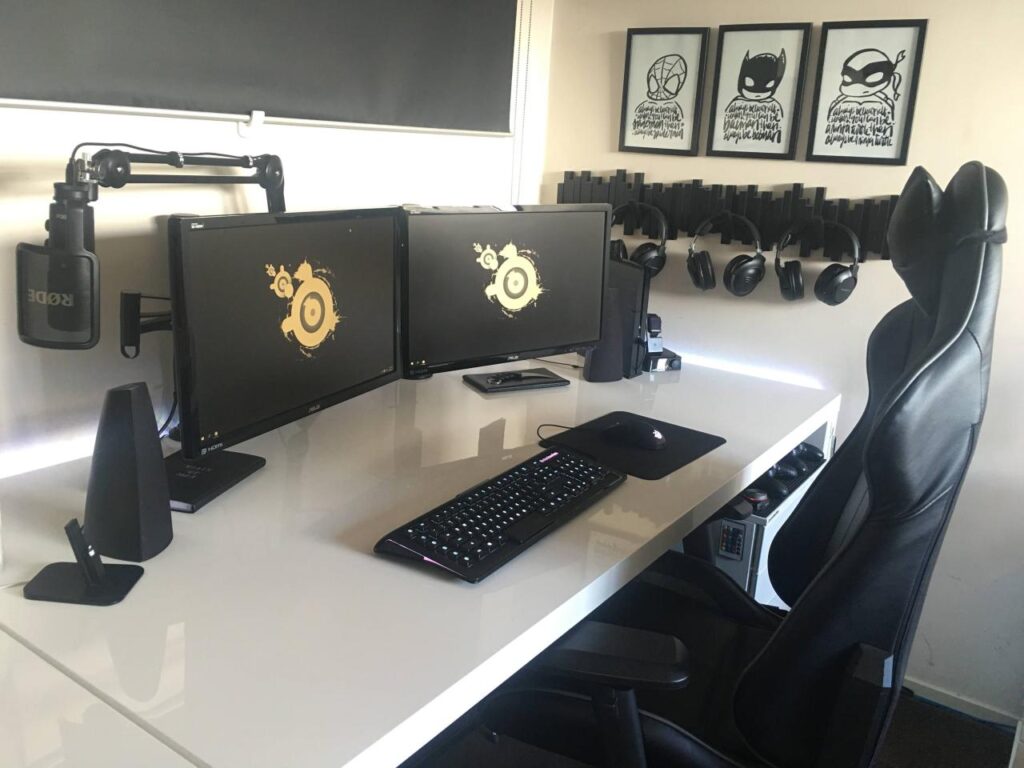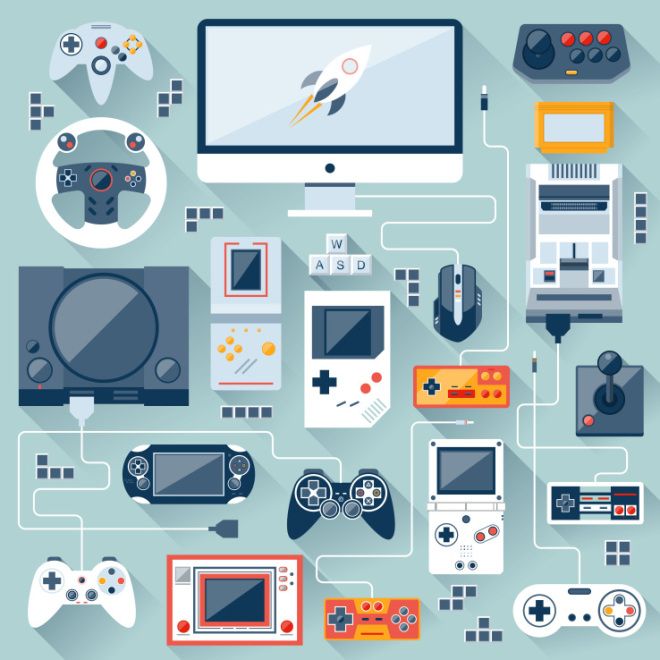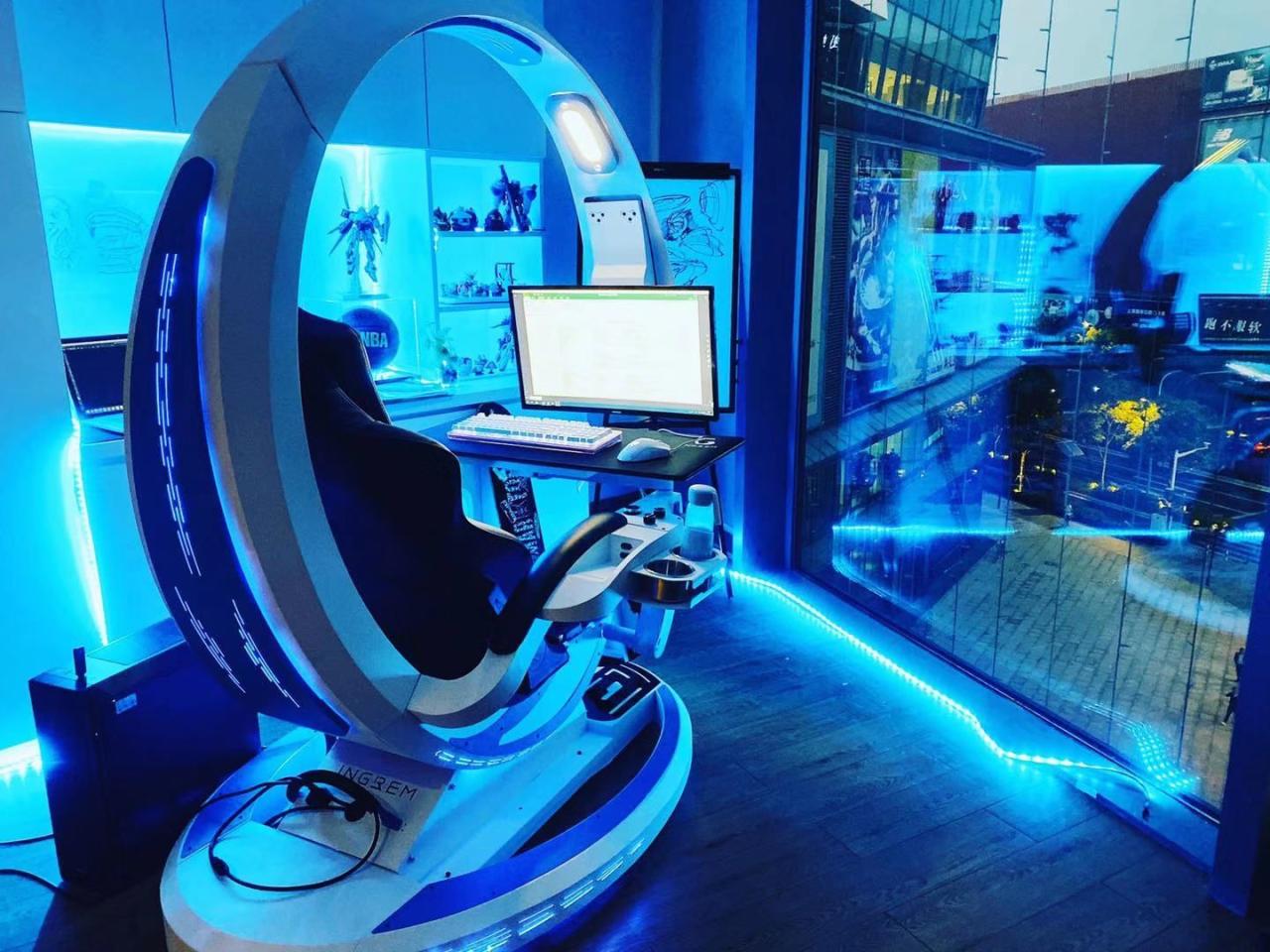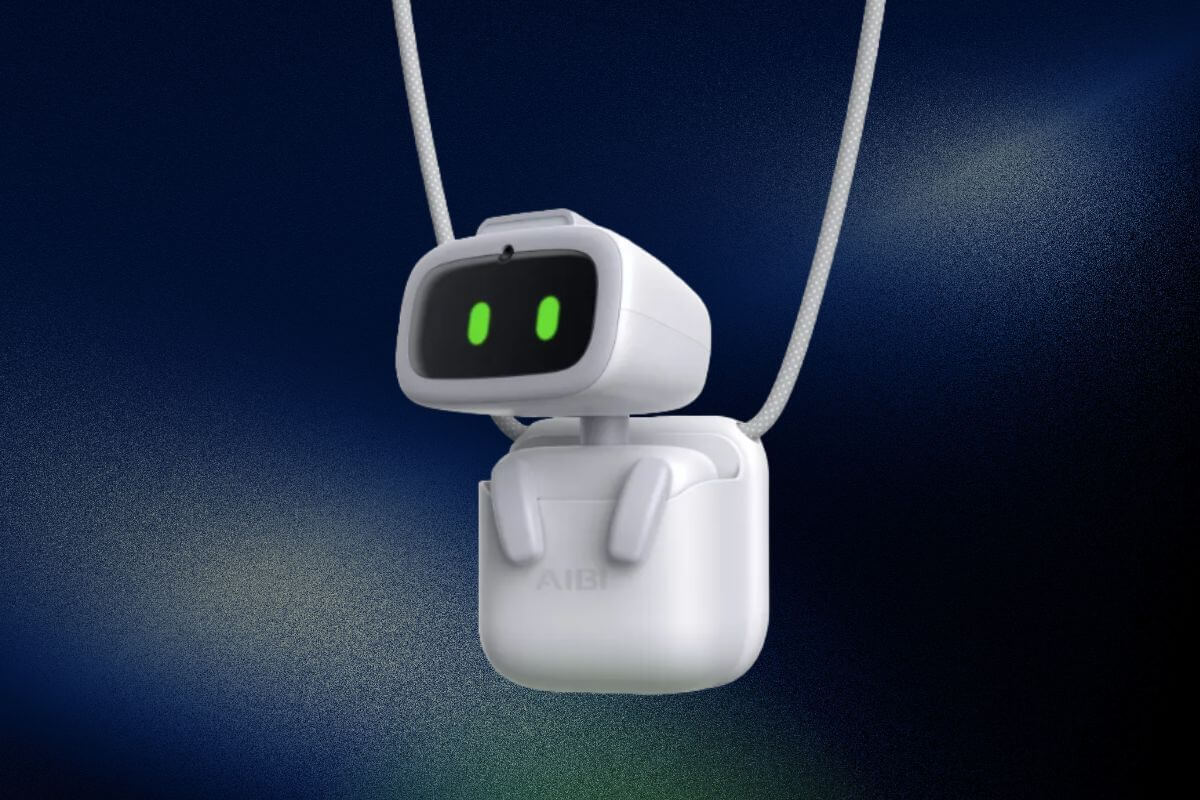Elevating the Gaming Experience
In the dynamic and fiercely competitive world of gaming, raw talent and strategic prowess are undeniably crucial. Yet, even the most skilled player can find their potential capped by inadequate tools. This is where gaming peripherals step in, transforming a casual pastime into a truly immersive and competitive experience. Far from being mere accessories, these specialized devices — from precision mice and tactile keyboards to immersive headsets and responsive controllers — are meticulously engineered to provide gamers with a distinct advantage, enhancing every aspect of their interaction with the virtual world. The market for gaming peripherals is a rapidly evolving landscape, driven by relentless innovation aimed at optimizing comfort, precision, responsiveness, and sensory immersion. This comprehensive article will delve deep into the cutting-edge advancements across various categories of gaming peripherals, exploring the technologies that define them, their impact on gameplay, and the future trends that promise to redefine how we play.
The Pillars of Performance: What Defines Top-Tier Peripherals?
High-performance gaming peripherals aren’t just about flashy aesthetics; they are built upon a foundation of advanced engineering and technological innovation designed to deliver tangible benefits in responsiveness, comfort, and control.
A. Precision and Responsiveness: The Need for Speed
In fast-paced games, milliseconds can mean the difference between victory and defeat. Gaming peripherals are optimized to minimize input lag and maximize accuracy.
- Low Latency Connection:
- Wired Connections: Traditionally, wired peripherals (USB) offer the lowest latency and are often preferred by professional gamers for their consistent and direct signal transmission. The direct electrical connection minimizes any potential for interference or signal delay.
- Advanced Wireless Technologies: Recent advancements in wireless technology, such as 2.4 GHz RF (Radio Frequency) dongles with proprietary low-latency protocols, have made wireless peripherals almost indistinguishable from wired ones in terms of responsiveness. Bluetooth, while convenient, typically has higher latency and isn’t usually recommended for competitive gaming unless it’s a specific low-latency gaming-focused implementation.
- High Polling Rates: The polling rate (measured in Hz) determines how often a peripheral reports its position or state to the computer. A higher polling rate (e.g., 1000 Hz, 8000 Hz) means the device communicates more frequently, resulting in smoother cursor movement and more immediate registration of inputs, crucial for precision aiming in first-person shooters (FPS).
- Sensor Accuracy (for Mice):
- DPI (Dots Per Inch) / CPI (Counts Per Inch): This refers to the sensitivity of the mouse sensor. Higher DPI allows the cursor to move further with smaller physical movements, which can be beneficial for high-resolution displays or quick turns in games. However, raw high DPI isn’t always better; what matters more is the sensor’s ability to track accurately at various speeds.
- IPS (Inches Per Second): This specifies the maximum speed at which a mouse can be moved while still maintaining accurate tracking. High IPS ratings ensure that rapid, sweeping movements common in competitive gaming are registered precisely without “spin-outs” (when the sensor loses track).
- Acceleration and Prediction: Top-tier gaming mouse sensors aim for zero hardware acceleration (no artificial increase in cursor speed based on mouse movement speed) and zero prediction (no software correction of mouse movements to create straighter lines). This ensures a 1:1 translation of physical hand movement to on-screen cursor movement, which is vital for muscle memory development and consistent aim.
- Optical vs. Laser Sensors: While both have evolved significantly, optical sensors (using an LED light) are generally favored by competitive gamers for their superior tracking on a wider variety of surfaces and their inherent lack of acceleration. Laser sensors (using a laser diode) can track on more challenging surfaces, including glass, but some older or lower-quality laser sensors could introduce unwanted acceleration.
B. Ergonomics and Comfort: Sustained Performance
Gaming sessions can last for hours, making comfort paramount. Ergonomics play a vital role in preventing fatigue and repetitive strain injuries.
- Mouse Shapes and Sizes: Gaming mice come in various shapes (ergonomic for right/left hand, ambidextrous) and sizes to accommodate different grip styles (palm, claw, fingertip) and hand sizes. Proper fit reduces strain and improves control.
- Keyboard Layouts and Wrist Rests: Different keyboard layouts (full-size, tenkeyless, 60%) cater to varying desk space and user preferences. Integrated or detachable wrist rests provide support, reducing strain on wrists and forearms during long typing or gaming sessions.
- Headset Weight and Clamping Force: Lightweight headsets with adjustable headbands and earcups that distribute clamping force evenly ensure comfort over extended periods. Materials used for earcups (e.g., memory foam, velour) also contribute significantly to comfort and breathability.
- Controller Design: Controllers are sculpted to fit naturally in the hands, with textured grips to prevent slipping and intuitive button placement for easy access to controls. Customization options, like interchangeable thumbsticks or back paddles, further enhance ergonomic adaptability.
C. Durability and Build Quality: Designed to Last
Gaming peripherals endure intense usage, so robust construction is essential for longevity and consistent performance.
- High-Quality Materials: Durable plastics, aluminum frames, and braided cables are commonly used to withstand repeated impacts, twists, and intense button mashing.
- Switch Lifespans: Mechanical keyboard switches and mouse switches are rated for tens of millions of clicks, ensuring reliability over years of use.
- Reinforced Cables and Connectors: Stress points where cables connect to devices are often reinforced to prevent fraying and breakage.
D. Customization and Personalization: Tailoring the Experience
Modern gaming peripherals offer extensive customization options, allowing gamers to fine-tune their setup to their exact preferences and optimize it for specific games.
- Programmable Buttons and Macros: Mice and keyboards feature extra programmable buttons that can be assigned to complex macros (sequences of commands) or specific in-game actions, giving players a tactical advantage.
- RGB Lighting: While often seen as purely aesthetic, customizable RGB lighting can serve functional purposes, such as indicating profiles, in-game cooldowns, or health status. More importantly, it allows for deep personalization of the gaming setup.
- Software Suites: Most high-end peripherals come with comprehensive software suites that allow users to adjust DPI, polling rates, rebind keys, create macros, manage lighting, and save custom profiles for different games or applications.
- Modular Components: Some peripherals offer modular designs, allowing users to swap out switches, add weights to mice, or replace earcups on headsets, extending their lifespan and adaptability.
The Arsenal of a Gamer: A Deep Dive into Peripherals
Let’s explore the key categories of gaming peripherals and the latest innovations within each.
A. Gaming Mice: The Extension of Your Hand
The gaming mouse is arguably the most crucial peripheral for PC gamers, directly influencing aim and navigation.
- Optical Sensors (Continued Dominance): As discussed, optical sensors remain the gold standard due to their raw tracking performance, especially on mouse pads.
- Lightweight Designs: A significant trend is the pursuit of ultra-lightweight mice, often achieved through honeycomb shell designs or smaller form factors. Lighter mice reduce fatigue during long sessions and allow for quicker, more agile movements.
- Wireless Performance Parity: Wireless gaming mice, once viewed with skepticism due to latency concerns, now offer performance on par with their wired counterparts thanks to advanced low-latency 2.4GHz wireless technologies (e.g., Logitech’s LIGHTSPEED, Razer’s Hyperspeed Wireless). This provides unparalleled freedom of movement.
- Ergonomic vs. Ambidextrous: Manufacturers offer a wide range of shapes to cater to different grip styles and hand sizes. Ergonomic designs prioritize comfort for a specific hand, while ambidextrous designs offer versatility for both left and right-handed users.
- Specialized Mice (MMO/MOBA vs. FPS):
- MMO/MOBA Mice: These often feature a large array of side buttons (e.g., 12-button thumb grid) for easy access to spells, abilities, and macros in complex online games.
- FPS Mice: These prioritize lightweight design, high sensor accuracy, and often have fewer, strategically placed buttons for quick melee or grenade throws.
- Magnetic Switches and Optical Switches: Beyond traditional mechanical switches, some mice are adopting newer switch technologies. Optical mouse switches use an infrared light beam to register clicks, eliminating debounce delay and making them inherently faster and more durable than mechanical switches. Magnetic switches offer a similar benefit by using magnets instead of physical contacts.
B. Gaming Keyboards: Precision and Tactile Feedback
The keyboard is the command center, and modern gaming keyboards offer a myriad of options for responsiveness, feel, and customization.
- Mechanical Switches: The industry standard for gaming keyboards, mechanical switches offer distinct tactile feedback, audible clicks, and rapid actuation compared to membrane keyboards.
- Types of Mechanical Switches:
- Linear (e.g., Cherry MX Red, Gateron Red): Smooth, consistent keystroke without a tactile bump or audible click. Preferred by some for fast, repetitive key presses in gaming.
- Tactile (e.g., Cherry MX Brown, Gateron Brown): Features a discernible bump midway through the keystroke, providing feedback without a loud click. Good for typing and gaming.
- Clicky (e.g., Cherry MX Blue, Gateron Blue): Offers both a tactile bump and a distinct audible click. Preferred by typists and some gamers who enjoy the auditory feedback.
- Actuation Force and Travel Distance: Gamers often look for switches with lower actuation force (less pressure needed to register a press) and shorter travel distance (how far the key needs to be pressed) for faster response times.
- Types of Mechanical Switches:
- Optical Switches: Similar to mice, optical keyboard switches use light to register key presses, resulting in extremely fast actuation, zero debounce, and enhanced durability.
- Hall Effect (Magnetic) Switches: A newer innovation, these switches use magnetic fields to register key presses. They allow for adjustable actuation points, meaning users can customize how far a key needs to be pressed before it registers, offering unparalleled customization for different games or tasks. Some even support rapid trigger, allowing keys to instantly re-actuate upon release, eliminating the need for the key to return to its reset point.
- Hot-Swappable Sockets: Many modern mechanical keyboards feature hot-swappable sockets, allowing users to easily change out switches without soldering. This provides immense flexibility for customization and repair.
- Form Factors:
- Full-size: Includes a numpad, ideal for productivity and games requiring many keybinds.
- Tenkeyless (TKL): Omits the numpad, saving desk space and allowing for a more ergonomic mouse position.
- 60% / 65% / 75%: Even smaller layouts that remove function rows, arrow keys, or other less-frequently used keys, maximizing desk space for mouse movement.
- Keycap Materials and Profiles: PBT plastic keycaps are often preferred over ABS for their durability and resistance to shine. Various keycap profiles (e.g., OEM, Cherry, DSA, SA) alter the feel and aesthetics of typing.
- Dedicated Media Controls and USB Passthrough: Convenience features like dedicated volume rollers, media buttons, and USB passthrough ports enhance the overall user experience.
C. Gaming Headsets: Immersive Audio and Clear Communication
Audio is crucial for situational awareness in games, and clear communication is vital for team-based play.
- Positional Audio (Virtual Surround Sound):
- 7.1 Virtual Surround Sound: Most gaming headsets utilize software-driven virtual surround sound (e.g., DTS Headphone:X, Dolby Atmos for Headphones). This simulates a multi-speaker setup, allowing players to accurately pinpoint the direction of in-game sounds like footsteps, gunshots, or enemy abilities, providing a significant competitive advantage.
- True 7.1/5.1 Surround Sound: Some higher-end headsets feature multiple discrete drivers in each earcup to deliver “true” surround sound, though this is less common due to complexity and weight.
- High-Fidelity Audio Drivers: Large, custom-tuned drivers (e.g., 50mm neodymium drivers) provide a wide frequency response, delivering rich bass, clear mids, and crisp highs for an immersive and detailed soundscape.
- Microphone Quality and Noise Cancellation:
- Clear Voice Communication: Microphones are optimized for clear voice pickup, ensuring teammates hear you without distortion.
- Active Noise Cancellation (ANC): While more common in consumer headphones, some premium gaming headsets offer ANC to block out external distractions, allowing for deeper immersion.
- Passive Noise Isolation: Well-designed earcups with good sealing provide excellent passive noise isolation.
- AI-Powered Noise Cancellation: Newer technologies use AI algorithms to intelligently filter out background noise (e.g., keyboard clicks, fan noise) from your microphone input, ensuring only your voice is transmitted.
- Wireless Connectivity: Low-latency 2.4 GHz wireless connectivity is increasingly prevalent, offering freedom of movement without compromising audio quality or responsiveness.
- Comfort and Breathability: As with keyboards, materials play a role. Memory foam ear cushions, breathable fabrics (like velour), and adjustable headbands are key for long-term comfort.
D. Gaming Controllers: Console Experience and PC Adaptability
While PC gaming heavily relies on mice and keyboards, controllers are essential for many genres (e.g., fighting games, racing games, platformers, sports simulations) and offer a familiar, ergonomic experience for console players.
- Haptic Feedback (Advanced Rumble): Modern controllers feature sophisticated haptic feedback systems that go beyond simple rumble. They can simulate a wider range of sensations, such as the tension of a bowstring, the impact of a car crash, or the texture of different surfaces, greatly enhancing immersion (e.g., PlayStation’s DualSense controller).
- Adaptive Triggers: These triggers can provide variable resistance and feedback based on in-game actions, adding another layer of tactile immersion (e.g., DualSense’s adaptive triggers).
- Customizable Buttons and Paddles: High-end “pro” controllers offer remappable buttons and additional paddles on the back, allowing players to keep their thumbs on the analog sticks while accessing crucial functions, providing a competitive edge.
- Wired vs. Wireless Options: Both wired and wireless controllers are available. Wireless controllers offer freedom, while wired versions ensure zero latency and no battery concerns.
- Cross-Platform Compatibility: Many modern controllers are designed to work seamlessly across multiple platforms, including PC, consoles, and even mobile devices.
E. Gaming Monitors: The Visual Gateway
While not typically classified as a “peripheral” in the same vein as mice or keyboards, the monitor is an inseparable part of the gaming setup and directly impacts the visual experience and responsiveness.
- High Refresh Rates (144Hz, 240Hz, 360Hz+): Essential for competitive gaming, high refresh rates deliver extremely smooth motion, reducing motion blur and allowing players to react faster to on-screen events.
- Low Response Times (1ms GTG): A fast response time (Gray-to-Gray, GTG) minimizes ghosting and smearing, ensuring sharp image clarity during fast-paced action.
- Adaptive Sync Technologies (G-Sync, FreeSync): These technologies synchronize the monitor’s refresh rate with the graphics card’s frame rate, eliminating screen tearing and stuttering for a fluid visual experience.
- Panel Types (TN, IPS, VA):
- TN (Twisted Nematic): Fastest response times, often found in high-refresh-rate competitive monitors, but with poorer viewing angles and color accuracy.
- IPS (In-Plane Switching): Excellent color accuracy and wide viewing angles, making them great for immersive gaming and content creation, with improving response times.
- VA (Vertical Alignment): Offer excellent contrast ratios and deep blacks, good for immersive single-player games, but can have slower response times than TN or IPS.
- High Resolution (1440p, 4K) and Ultrawide Displays: Higher resolutions provide more detailed visuals, while ultrawide monitors offer an expanded field of view for a more immersive experience.
- OLED and Mini-LED Displays: These newer technologies are bringing incredible contrast, true blacks, and vibrant colors to gaming monitors, though often at a premium price.
F. Other Notable Peripherals: Enhancing Specific Experiences
Beyond the core components, several other peripherals cater to specific gaming needs.
- Gaming Chairs: Ergonomically designed chairs with lumbar and neck support, adjustable armrests, and recline functions are essential for comfort during long gaming sessions, preventing back pain and improving posture.
- Flight Sticks and Racing Wheels: Specialized controllers for flight simulators and racing games provide unparalleled realism and control, offering a truly immersive experience. Force feedback in racing wheels adds to the realism by simulating road feel and impacts.
- Stream Decks / Macro Pads: Devices like the Elgato Stream Deck offer programmable buttons with customizable LCD icons, allowing streamers and content creators to trigger complex actions, switch scenes, or control software with a single press.
- Webcams and Microphones (for Streaming): High-quality webcams (e.g., 1080p 60fps, 4K) and dedicated condenser microphones are crucial for streamers to present a professional image and clear audio to their audience.
The Impact on Gameplay and Competitiveness
The right gaming peripherals don’t just feel good; they provide tangible advantages that can significantly impact gameplay and competitive performance.
A. Enhanced Precision and Aiming
For genres like FPS, MOBAs, and RTS, the difference a high-precision mouse and a responsive keyboard make is immense. Improved sensor accuracy, lower latency, and customizable DPI settings allow for pixel-perfect aim, quick flick shots, and precise unit control, directly translating to more kills, better last-hitting, and more effective micro-management.
B. Faster Reaction Times
The combination of high polling rates, low-latency connections, and fast-actuating switches (mechanical, optical, magnetic) reduces the time between a physical input and its on-screen execution. This allows players to react faster to visual cues, dodge attacks, activate abilities, or block incoming damage milliseconds sooner, which is a critical advantage in high-stakes competitive scenarios.
C. Superior Situational Awareness
High-quality gaming headsets with accurate positional audio allow players to hear subtle sound cues – footsteps approaching from behind, the direction of gunfire, or the location of an enemy ability. This auditory information provides a significant tactical advantage, enabling players to anticipate threats and position themselves strategically.
D. Reduced Fatigue and Increased Stamina
Ergonomically designed peripherals, from mice and keyboards to chairs and headsets, minimize physical strain. This allows gamers to maintain focus and peak performance for extended periods without succumbing to discomfort or repetitive strain injuries, crucial for competitive tournaments or long grinding sessions.
E. Personalized Control and Workflow Optimization
Extensive customization options – programmable buttons, macros, adjustable actuation points, and software profiles – allow players to tailor their setup precisely to their playstyle and specific game requirements. This personalized control streamlines complex actions, making them more intuitive and efficient, leading to faster execution of combos or critical abilities.
The Future of Gaming Peripherals
The evolution of gaming peripherals is a continuous journey, driven by technological breakthroughs and the ever-increasing demands of gamers.
A. Haptic Feedback Everywhere: Immersive Sensory Experiences
Expect to see haptic feedback extend beyond controllers to mice, keyboards, and even chairs. Imagine a mouse that vibrates slightly when you take damage in-game, or keyboard keys that provide distinct tactile feedback for different actions (e.g., a heavier feel for weapon switching). This will create a more visceral and immersive sensory experience.
B. Deeper AI Integration: Intelligent Assistance
AI will play an even more significant role in peripherals.
- Adaptive Peripherals: Devices might dynamically adjust their settings (e.g., mouse DPI, headset EQ) based on the game being played, the player’s performance, or even their fatigue level.
- AI-Powered Noise Cancellation: Expect more sophisticated AI algorithms to isolate voice more effectively from background noise on microphones, making communication crystal clear.
- Performance Analytics: Peripherals could gather data on player inputs (e.g., reaction times, keypress consistency) and provide AI-driven insights to help players improve their mechanics.
C. Modular and Customizable Ecosystems: Ultimate Personalization
The trend towards modularity will intensify, allowing users to easily swap out components like switches, sensors, batteries, and even external shells. This will not only facilitate customization but also extend the lifespan of peripherals and reduce electronic waste. Imagine building your perfect mouse or keyboard from a selection of interchangeable parts.
D. Advanced Biometrics for Personalized Authentication and Performance Tracking
Integration of biometrics like heart rate sensors, galvanic skin response (GSR), or even eye-tracking into peripherals could lead to:
- Automatic Profile Switching: Your peripheral recognizes you and loads your personalized settings.
- Stress Monitoring: Detecting player stress levels through physiological responses and potentially offering feedback or adjusting game settings to mitigate it.
- Accessibility Enhancements: Peripherals adapting to individual physiological needs for greater accessibility.
E. Ubiquitous Wireless Charging and Extended Battery Life
Wireless charging mats for an entire desk surface could become common, allowing peripherals to continuously charge without cables. Advancements in battery chemistry will lead to even longer battery lives, making wireless a truly “set it and forget it” solution.
F. Environmentally Conscious Design: Sustainable Gaming
Manufacturers will increasingly focus on sustainable practices, using recycled materials, designing for repairability, and minimizing the environmental footprint of their production and packaging processes.
Conclusion
Gaming peripherals are much more than mere accessories; they are critical tools in a gamer’s arsenal, meticulously designed to provide an unparalleled advantage in speed, precision, comfort, and immersion. From the lightning-fast response of optical switches to the crystal-clear positional audio of advanced headsets, every innovation aims to bridge the gap between player intent and in-game execution.
The continuous evolution of these devices, driven by breakthroughs in AI, sensor technology, and material science, promises an even more personalized and intuitive gaming experience in the years to come. As the lines between virtual and reality continue to blur, gaming peripherals will remain at the forefront, empowering players to push their limits, unlock new levels of skill, and truly immerse themselves in the digital worlds they explore. The quest for the ultimate edge in gaming is an unending journey, and gaming peripherals are our indispensable companions along the way.














